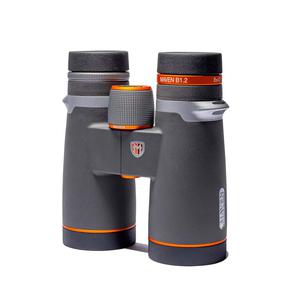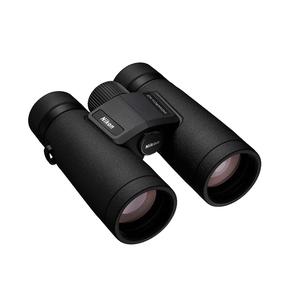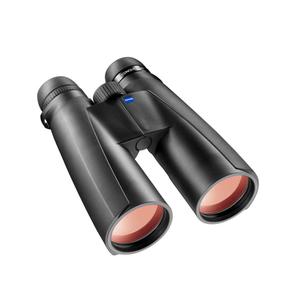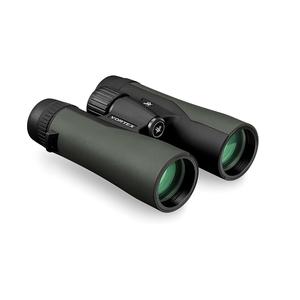Image Stabilization in Binoculars and Monoculars
In the realm of photography and optical devices, image stabilization (IS) stands as a pivotal advancement, significantly enhancing image clarity by mitigating the impacts of camera shake and vibration. This technology, while prevalent in cameras and smartphones, also extends its benefits to binoculars and monoculars.
This article delves into the workings of image stabilization, its critical role in various optical devices, and the specific advantages and challenges associated with stabilized binoculars and monoculars.
In short: Image Stabilization (IS) is a technology used in cameras and optical devices to reduce blurriness in images caused by motion or shaking during exposure. It stabilizes the image by either moving lens elements (Optical Image Stabilization) or adjusting the image sensor (Electronic Image Stabilization), allowing for clearer, sharper images even in situations where the camera or device is moving. This feature is especially useful in low light conditions, high zoom levels, and when capturing fast-moving subjects.
- Unveiling the Mechanics of Image Stabilization
- The Importance of Image Stabilization in Optics
- Pros and Cons of Stabilized Binoculars and Monoculars
- Comparing OIS and EIS: A Tabular Overview
- Choosing the Right Image Stabilized Binoculars and Monoculars
Unveiling the Mechanics of Image Stabilization

Image stabilization combats involuntary movements of either the user or the device, which are common culprits behind blurred or shaky images. This technology bifurcates into optical image stabilization (OIS) and electronic image stabilization (EIS).
Optical Image Stabilization (OIS) :OIS employs gyroscopes or accelerometers to detect device motion, subsequently adjusting a lens element or mirror to counterbalance this motion. This alignment ensures that light rays entering the device remain consistent with the image sensor or eyepiece, yielding stable, sharp images. OIS particularly shines in high-magnification devices like binoculars and monoculars, adeptly correcting larger, more rapid movements.
Electronic Image Stabilization (EIS): Conversely, EIS leverages software algorithms to modify image data, cropping or shifting pixels to diminish motion blur. This method is more apt for devices with lower magnification, such as smartphones and cameras, where movements are generally slower and less pronounced. However, EIS can compromise image resolution and quality, as it involves altering or discarding certain pixels.
The Importance of Image Stabilization in Optics
Image stabilization is invaluable for any optical device demanding a steady, clear view of distant or moving subjects. Its applications span across various fields:
Astronomy: It mitigates effects of atmospheric disturbances, wind, and tremors, enhancing views of celestial bodies.
Wildlife Observation: This technology brings out finer details and colors in distant or moving wildlife.
Sports and Events: It enhances visibility and excitement in fast-paced or action-packed scenarios.
Travel and Sightseeing: Image stabilization allows for capturing the essence of scenic or historic sites without reliance on tripods or steady surfaces. Just so you know, if interesting binocular models are what you're after, here are our four best picks for 2024:
- High-End Performance at Affordable Price
- Ideal for Hunting, Birding, and Wildlife Viewing
- Enhanced Low-Light Performance
- Tack-Sharp Edge-to-Edge Vision with Deep Field
- Compact and Lightweight with Improved Light Transmission
- ED Glass Lenses Minimize Distortion
- Ideal for Birding and Wildlife Observation
- Rubber-Armored, Non-Slip Grip Design
- Waterproof and Fog-Proof for Reliable Performance
- Turn-and-Slide Rubber Eyecups for Eyeglass Compatibility
- HD Lens System for Vivid Imaging
- Best for Birdwatching and Nature Observation
- LotuTec Coatings for Scratch Protection
- Conveniently Placed Focusing Wheel for Easy Use
- Perfect for Stalking Game and Rough Terrain
- Exceptional Clarity and Color Fidelity
- Resistant to Water and Fog
- Eyecups Adjustable for Eyeglass Wearers
- Secure, Non-Slip Rubber Armor
- Includes GlassPak Harness for Easy Carrying
Pros and Cons of Stabilized Binoculars and Monoculars

While offering significant benefits, image-stabilized binoculars and monoculars also present certain drawbacks:
Benefits:
- Higher Magnification: They allow for greater magnification without compromising image quality or stability.
- Extended Viewing Comfort: Reduced eye strain and fatigue lead to more comfortable and prolonged usage.
- Enhanced Portability: Their ability to compensate for hand movements negates the need for tripods, offering greater flexibility in various settings.
Challenges:
- Cost: The sophisticated technology involved results in a higher price point.
- Weight: Additional components contribute to an increase in weight.
- Power Consumption: The necessity for batteries or external power sources can limit usage time and increase operational costs.
Comparing OIS and EIS: A Tabular Overview
Below is a comparison table highlighting the advantages and disadvantages of Optical Image Stabilization (OIS) and Electronic Image Stabilization (EIS):
| Feature | Optical Image Stabilization (OIS) | Electronic Image Stabilization (EIS) |
|---|---|---|
| Mechanism | Adjusts lens/mirror position to counteract motion | Analyzes and modifies image data to reduce motion blur |
| Effectiveness | Superior for high-magnification devices (e.g., binoculars) | Better suited for low-magnification devices (e.g., smartphones) |
| Image Quality | Maintains original resolution and quality | Potentially reduces resolution and quality |
| Cost | Generally more expensive due to complex mechanisms | Less costly, relying on software algorithms |
| Weight | Heavier, owing to additional components | Lighter, as it involves no extra hardware |
| Power Consumption | Higher, needing batteries or external power | Lower, utilizing the device's own processing capabilities |
In sum, image stabilization technology has markedly improved the functionality and user experience of various optical devices, rendering it a cornerstone in the optics industry. Whether for professional or recreational use, understanding and choosing the right image-stabilized equipment can significantly enhance one's viewing experience.
Choosing the Right Image Stabilized Binoculars and Monoculars

When selecting image-stabilized binoculars or monoculars, consider these factors:
Magnification: Balance the desired level of detail with susceptibility to image shake.
Objective Lens Size: Larger lenses offer brighter images but increase size and weight.
Image Stabilization Mode: Choose between active (constant compensation) and passive (user-activated) modes based on usage patterns and power consumption.
Image Stabilization Angle: A larger angle handles more movement but may increase complexity and cost.
Concluding Thoughts
Image stabilization has revolutionized the use of binoculars and monoculars, offering enhanced magnification, comfort, and portability. However, these benefits come with increased costs, weight, and power demands.
When searching for the ideal product, consider handheld stabilized binoculars for their blend of flexibility and enhanced viewing experience.
You may also like:




